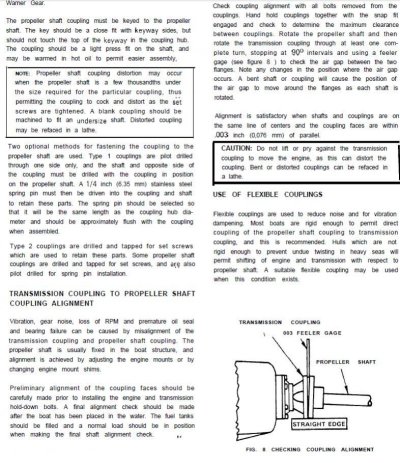Derik
Senior Member
- Joined
- Aug 21, 2018
- Messages
- 160
- Location
- United States
- Vessel Name
- Pearl Grace
- Vessel Make
- Marine Trader/Sun Deck 44
I have the Borg Warner 72c's and was getting ready to do an oil change. Reading through the Borg Warner Velvet drive Owners Manual it mentions a propeller shaft coupling shaft alignment and recommends it be done after a haul out.
It seems fairly straight forward with a feeler gauge, is it something you guys here do routinely after a haul out?
It seems fairly straight forward with a feeler gauge, is it something you guys here do routinely after a haul out?

